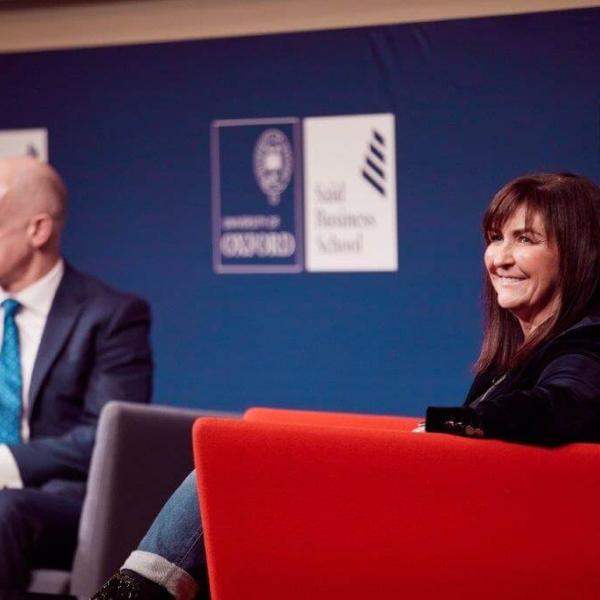About the event
No subject was off-limits when the Walmart International CEO visited Oxford Saïd
‘Businesses and people can no longer be wedded to the old ways of working. We have to become much more open, more willing to partner with people and organisations in ways that might previously have been seen to be anti-competitive ... You need to know when to build, when to buy, and when to partner … You need to adapt and change faster than you ever thought possible.’
The retail sector used to be mistaken for the poor relation of career options – tied to a long history and bricks-and-mortar stores, plodding slowly behind glamorous and innovative technology companies. But anyone who still thinks that has clearly not met Judith McKenna, CEO of Walmart International, who visited Oxford Saïd to talk about everything from transformation at scale to curiosity and continuous learning.
Introduced by Paul Chapman, Fellow in Operations Management, McKenna was keen to answer questions put to her by the MBA students in the audience.
What is the key to creating change at scale?
You need two things: trust and simplicity. If you are going to transform a company at scale you need the trust of the business. They must know what you are doing, believe in it, and know what good looks like. And then you have to keep it simple. In a company the size of Walmart, if 2.2 million people don’t get it, frankly it is not going to happen.
Walmart is one of the largest companies in the world and one of the most dynamic. Yet when I look around at my classmates on the MBA they all seem to want to work for Amazon or McKinsey. Is Walmart failing to attract the best talent?
I think Walmart has done a good enough job of telling our story, talking about the opportunities we create, about what we do around the world, and that it’s a place where you can build pretty much any career that you want and make a difference at scale. And I think we’ve just got to keep telling this story on different levels.
We’re making some really great hires, which suggests that the message is getting out there. We are seeing more people coming in from top business schools, often with new skills that were not perhaps part of the traditional Walmart skillset – but are now.
How do you use your power and influence with suppliers to influence worker safety and responsibility within the supply chain?
This is an issue that we take very seriously. We have a separate Responsible Sourcing team whose entire job is making sure that the suppliers we use, particularly in more challenging parts of the world, take their own responsibilities seriously in terms of workers’ rights, health and safety, etc. We have regular factory inspections and all our manufacturers have to be certified.
We believe it is important to work in partnership with our suppliers, rather than in a purely transactional way. Our Project Gigaton, for example – a sustainability project to remove a gigaton of greenhouse gases from the value chain by 2030 – is one where we have to bring partners along with us. Similarly, our focus on community – improving and enriching the lives of the people around the stores – is a matter for partnership rather than negotiation.
